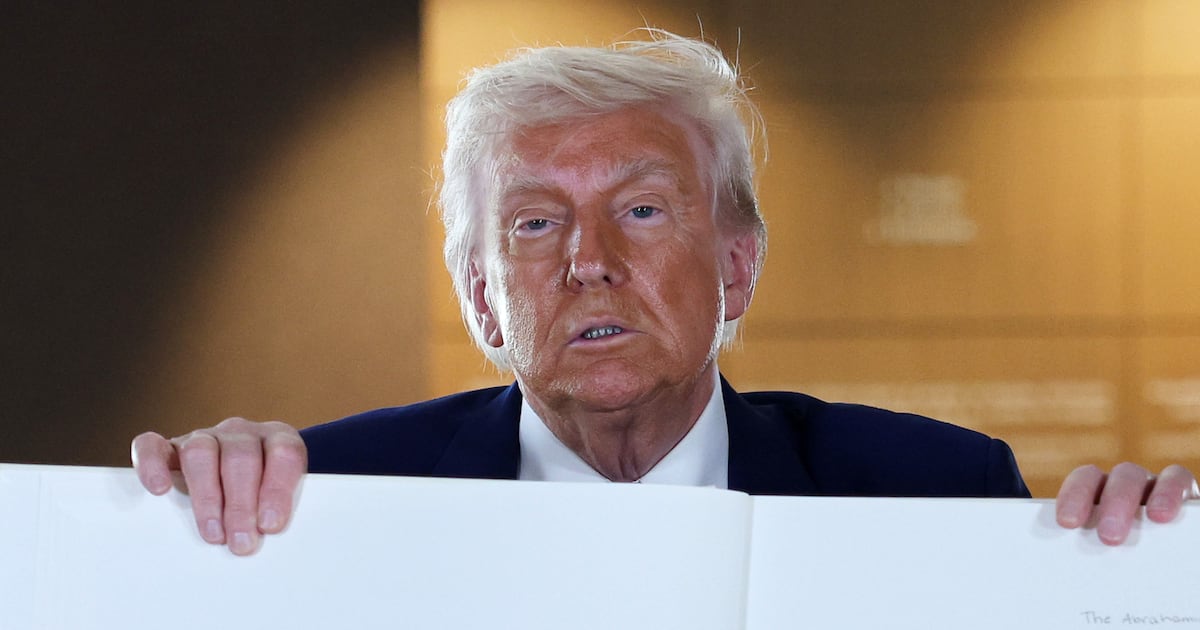
Editor's Note: In an earlier version of this article, three sentences were paraphrased from a Talk Left report and one sentence copied from The Times of India, both without attribution. The Daily Beast has added the attribution in both cases and regrets the error.
The news that a 49-year-old Chicagoan, David Headley, was arrested on 12 counts of murder and providing material support to a terror group for last year’s deadly attack in Mumbai has again raised the specter of homegrown terrorists that may even, as The Daily Beast reported, have served as a kind of “underground railroad” to bring other militants into the country.
The Daily Beast has since learned that Headley’s connections to the Drug Enforcement Administration's murky intelligence unit—which I confirmed yesterday—might have played a role in his alleged conversion to terrorism. Additionally, sources at a foreign intelligence agency tell me that he might have been a double agent who turned on the U.S.
Indian intelligence believes that Headley was an undercover U.S. agent who went rogue, says a source familiar with their thinking.
Headley was allegedly valuable to Lakshar-e-Taiba—the Pakistani terror group that pulled off the Mumbai attack—because as an American he traveled easily and undetected between the U.S., India, Pakistan, and Denmark (where he’s been linked to a plot to kill a Danish cartoonist who angered fundamentalist Muslims with his lampooning cartoons of the Prophet Muhammad). Born in Washington but raised mostly in Pakistan, Headley’s father was a former Pakistani diplomat and his mother a one-time Philadelphia socialite. It’s there that Headley moved in the 1970s to live with his mother and attended a community college.
• Philip Shenon: A Terrorist Immigration Service? In February 1997, Headley was arrested in New York for conspiracy to import heroin into the U.S. The indictment was brought under his original name, Daood Saleem Gilani, along with a codefendant James Leslie Lewis. (Lewis got a 10-year sentence, later reduced to 100 months.)
Headley was detained pending trial. After the U.S. Attorney's Office in the Eastern District of New York submitted five sealed documents, Headley was released on bond (those sealed papers are probably the official notice that he had chosen to cooperate with prosecutors, and he did later testify for the government in another heroin case). Headley got a 15-month sentence and five years of supervised release. My review of the court documents in the case indicates that Headley was scheduled to turn himself in on October 9, 1998. A week before that, the prosecutors submitted another sealed letter into the file. Headley’s surrender date was postponed for a month. When he did turn himself in, he was delivered to the low-security Federal Correctional Institution in Fort Dix, New Jersey.
The following July, a letter endorsed by Headley’s New York-based attorney, Howard Leader, requested permission for Headley to travel to Pakistan from August 10, 1999, through September 15. Judge Carol Amon granted the unusual request for the Pakistani travel. By that time, a former agent with the DEA discloses to The Daily Beast that Headley had begun cooperating with the agency, whose investigators had originally made the case against him. (The DEA had no comment on any aspect of Headley or his alleged informant status.)
There is no record of that first trip Headley took to Pakistan for the feds, and Fort Dix refuses to disclose any information about his supervised leave from their facility in 1999. But the same DEA source, who fingers Headley as an informant, says he did travel to Pakistan that year and conducted undercover surveillance operations on an Afpak drug gang. What is indisputable is that on November 16, 2001, just two months after the 9/11 attacks, Leader, Headley’s attorney, and an assistant U.S. attorney, Loan Hong, made a joint application to Judge Amon to terminate Headley’s supervised release three years early. Judge Amon agreed and discharged Headley from any further probation.
In a post-9/11 world of high security, Headley somehow managed to then move with apparent ease in and out of Pakistan. A convicted felon of Pakistani descent, making frequent trips back and forth to the U.S. (there were apparently at least four in one year), would have been monitored by U.S. tracking agencies. People traveling to and from Pakistan automatically came up on scanner software installed shortly after 9/11 at airports. Moreover, Headley also evidently visited the United Arab Emirates, a source of considerable money to terror groups like al Qaeda. The Daily Beast has learned that Headley is the half-brother of the public-relations officer for the current Pakistani prime minister, and an American intelligence asset says that one of Headley’s other Pakistan-based relatives in 2001 was a ranking officer in that country’s equivalent of the CIA, Inter-Services Intelligence. ISI was considered a pro-Taliban intelligence agency not friendly with the West.
Privately, U.S. government officials, who downplay any nefarious connotation about Headley’s post-9/11 travel, tell me that he changed names to make travel easier (in 2006, for instance, he changed his name from Daood Gilani to David Coleman Headley, but he had been known under the Headley name in federal files before he adopted that name for travel). Since U.S. agencies keep data on drug offenders, it is unlikely he gave U.S. intelligence and Homeland Security the slip by simply changing his traveling name to an alias that was already known to U.S. authorities. More probably: He did enough to continue to merit the protection of the DEA or had by that time been passed along as a potential asset to another branch of U.S. intelligence.
Indian intelligence believes that Headley was an undercover U.S. agent who went rogue, says a source familiar with their thinking. Headley, who is now cooperating with federal authorities in the terror probe, has evidently admitted joining Lashkar-e-Taiba in 2006, and having received training in one of their terror camps in Pakistan. The Times of India reports that according to one theory, "Headley was used by U.S. intelligence to infiltrate the Lashkar terrorists, but gradually turned under the influence of those very terrorists he was supposed to spy on."
Fueling the speculation abroad is that the FBI managed to warn its Indian counterparts of a planned attack in Mumbai in September 2008. The’s FBI accurate intel about that operation has been corroborated by Azam Amir Kasab, the only surviving terrorist from Mumbai, who admitted under interrogations that the attack was originally set for September but had to be aborted. The Indians thought the FBI alert for September was so specific—even mentioning target hotels, including the eventual main target, the Taj Mahal Palace—that the Bureau might have an informant inside a Pakistani terror group. Indian intelligence believes that it was Headley who passed along that info to the FBI. But then, his information to his American handlers suddenly dried. By the time the terrorists eventually pulled off the successful November attack, U.S. intelligence agencies were caught flat-footed.
It was shortly before the Mumbai attacks that the FBI evidently first put Headley under its surveillance, leading to his arrest this past October. The FBI has rejected the requests of Indian investigators to talk to Headley or his co-conspirator, Tahawwur Hussain Rana, a 48-year-old Pakistani native with Canadian citizenship. U.S. officials blamed “bureaucratic” and “procedural” hurdles for denying Indian investigators access to Headley. But keeping Headley locked up and away from other investigators isn’t stopping the questions posed by some foreign governments about whether an American informant turned on his handlers and might have helped pull off India’s 9/11.
Gerald Posner is The Daily Beast's chief investigative reporter. He's the award-winning author of 10 investigative nonfiction bestsellers, on topics ranging from political assassinations, to Nazi war criminals, to 9/11, to terrorism. His latest book, Miami Babylon: Crime, Wealth and Power—A Dispatch from the Beach, was published in October. He lives in Miami Beach with his wife, the author Trisha Posner.




